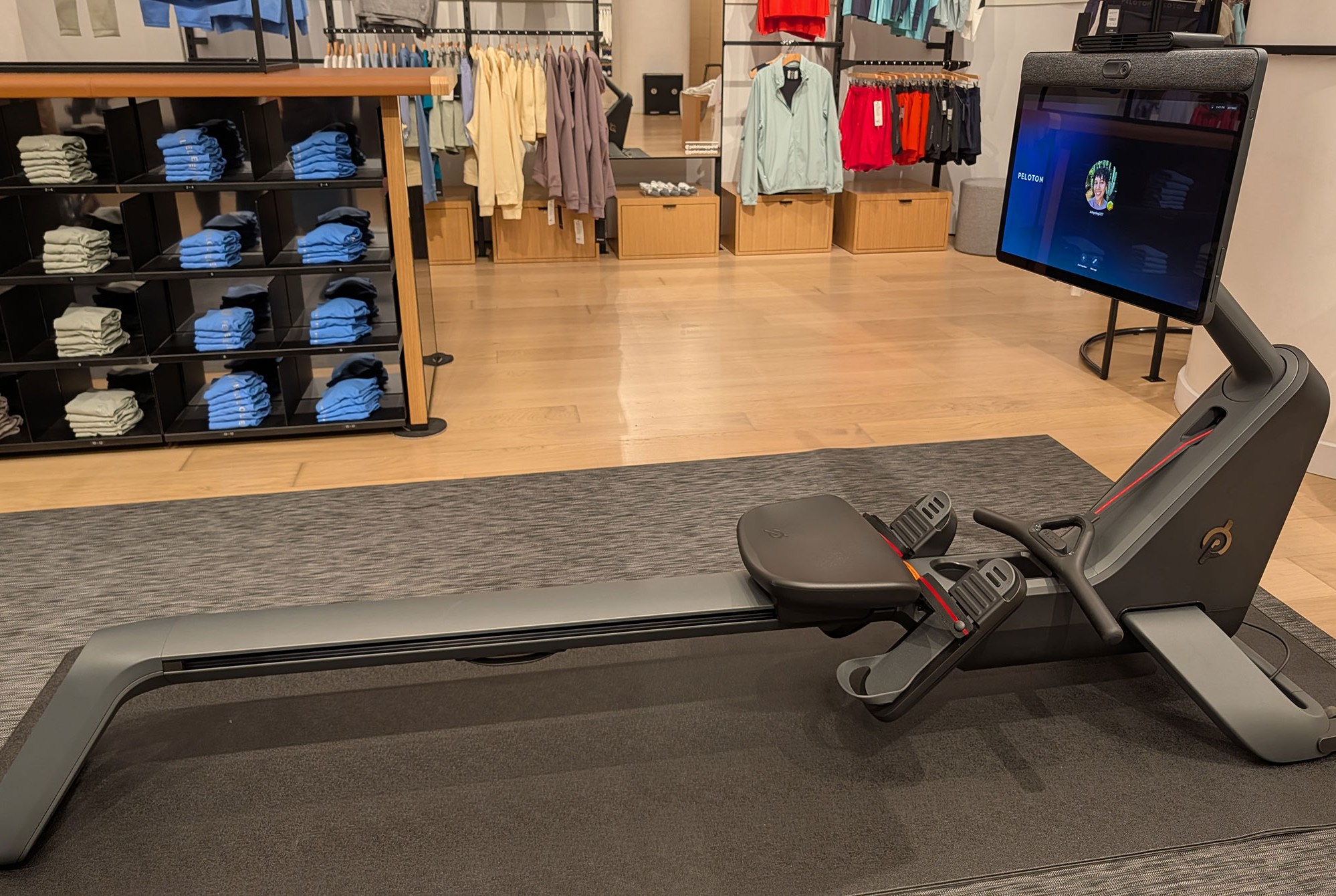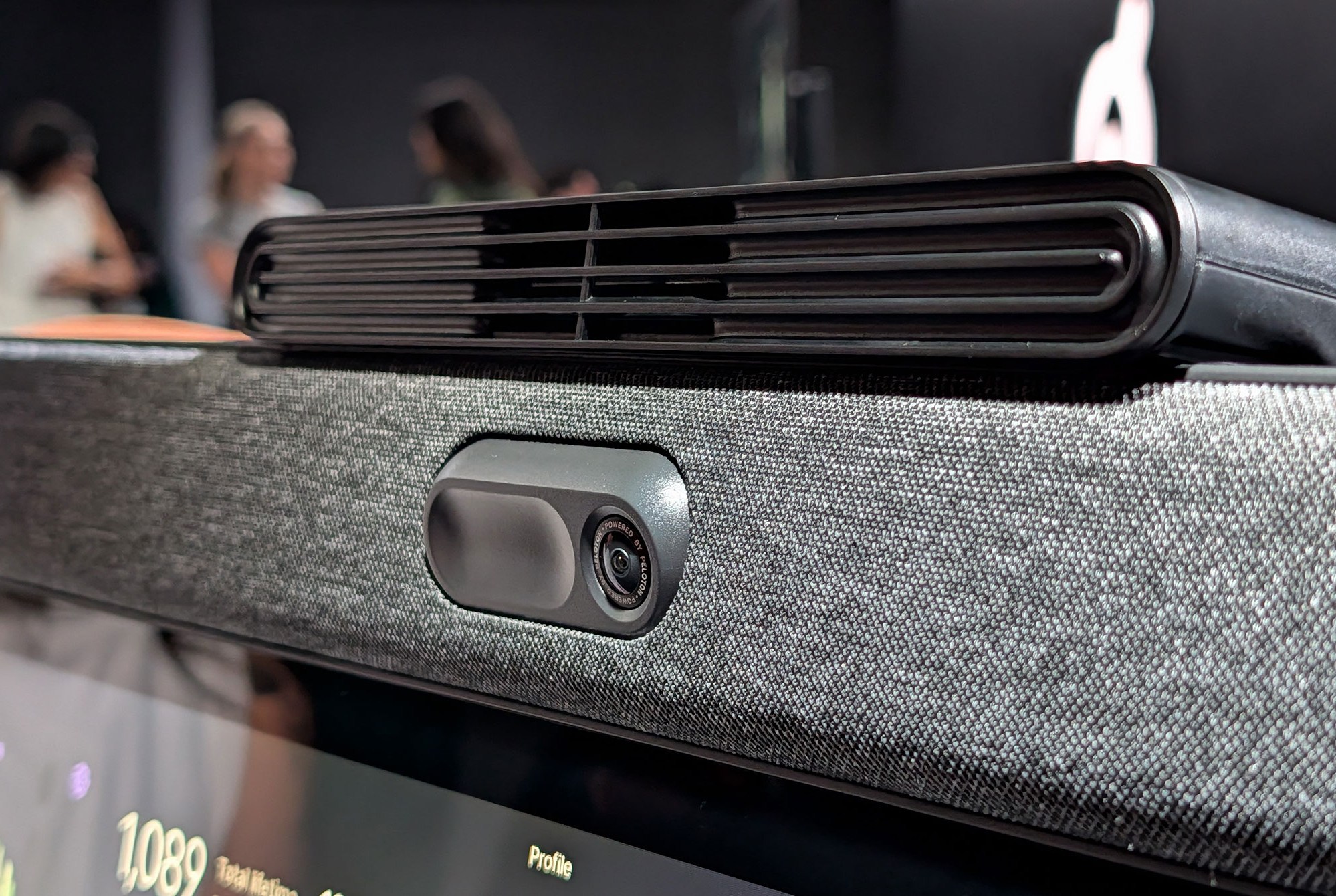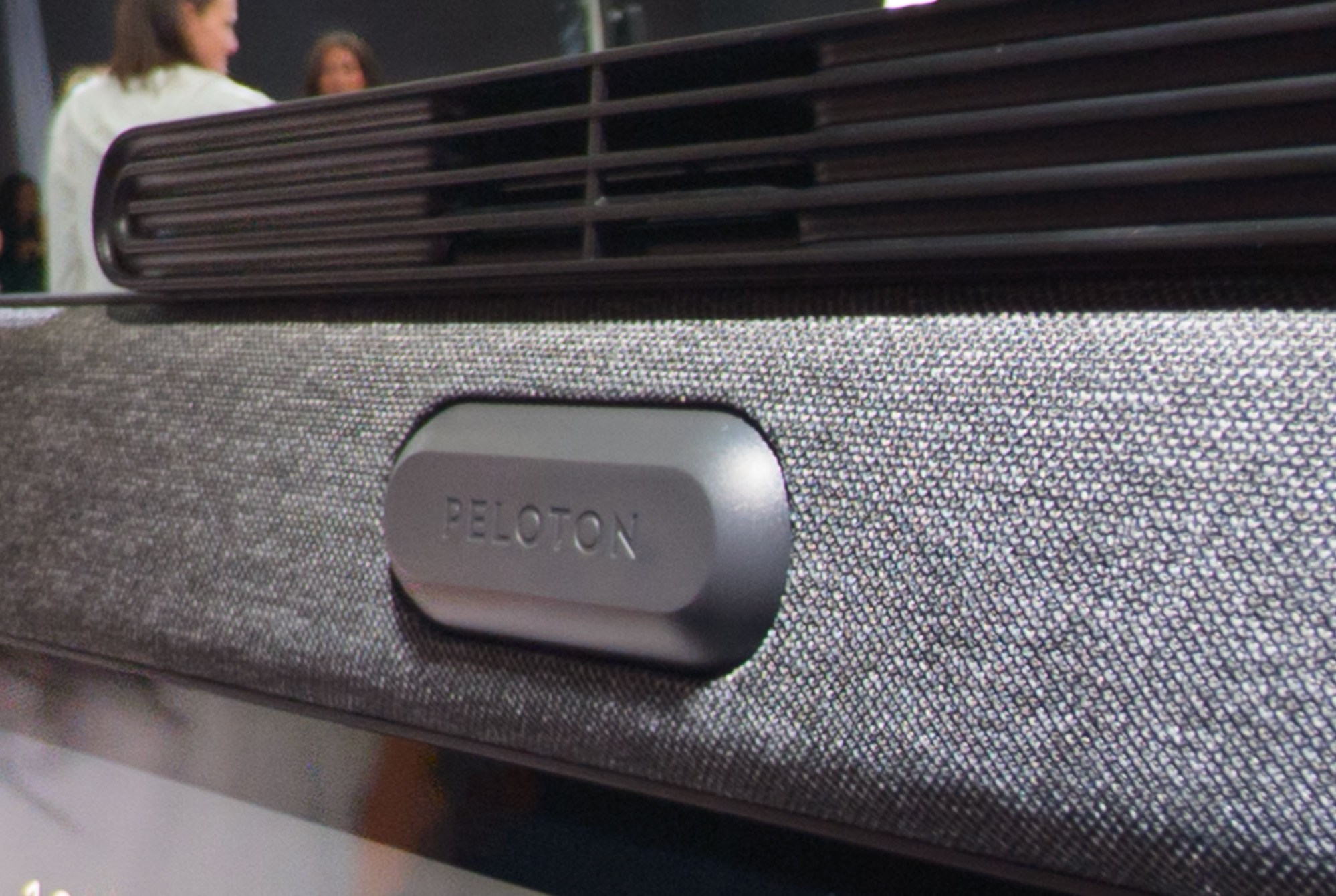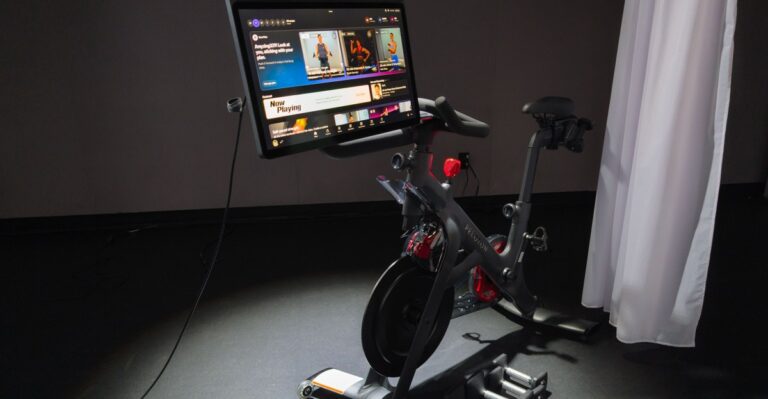Peloton has been angling for a redemption arc ever since its status as a pandemic darling started faltering when the world reopened for business. It tried to steady the ship with a series of layoffs, a pivot to subscriptions, and a leadership shuffle. Now, Peloton’s hoping to kick off a new era with the Cross Training Series, a total refresh of its product lineup consisting of a new Bike, Bike Plus, Tread, Tread Plus, and Row Plus.
“The impetus behind the Cross Training series is, ‘Let’s just give people one place to do all the strength and cardio workouts in one spot,” says Nick Caldwell, Peloton’s chief product officer. “We now make that convenient, all in one.”
The Cross Training Series takes the swivel display from the original Bike Plus, enables it to spin 360 degrees, and spreads it across the entire product lineup. Meaning, a Peloton machine is no longer for cardio alone. In a smaller space, the display can swing out so you can do strength training or other types of exercises alongside running, cycling, or rowing. The new lineup also adds better audio, updated processors, and improved Bluetooth and Wi-Fi connectivity. The Bike and Bike Plus will also get a new, cushier seat — a feature that Caldwell says was hotly requested from the Peloton community.
The Plus models add even more upgrades. That includes a movement tracking camera so the device can provide form feedback, rep tracking, and suggested weights. The speakers now include a woofer, presumably so the bass drop hits harder in a class, and Peloton partnered with Sonos on the specs and tuning. The machines will also support an “Ok Peloton” voice command that will let members skip moves or pause classes. Meanwhile, the Bike Plus will get a dedicated phone tray that attaches to the handlebars.
The Plus models sort of feel like the company decided to squish the Guide — Peloton’s little-known strength training camera — into its exercise machines. When I suggest this to Caldwell, he says that was basically the feedback Peloton got on the original device. “People who got the Guide put it on their TV and actually used it. They love it. It’s one of our highest-rated products,” he says. “The problem is it having to be plugged into the TV all the time. People really wanted an integrated solution.”
Caldwell says Peloton has also refined some of the features that were first introduced on the Guide. The Plus models support form feedback across a wider range of exercises and the camera has been improved. The devices also have more storage, so they can run larger machine vision models.

Given all the upgrades, these machines won’t come cheap. The two Bikes are the most affordable at $1,695 for the base model and $2,695 for the Plus. It only gets more expensive from there. The Row Plus will cost $3,495, while the regular Tread will cost $3,295. The Tread Plus is a whopping $6,695. At a small New York City launch keynote, CEO Peter Stern also noted that Peloton’s subscription would also be increasing from $44 to $49 per month. Despite the hefty cost, the company’s diehard fans often cite the hardware as a key reason why they love the platform.
But Peloton isn’t pinning all its hopes on hardware alone. Stern declared that “AI has the potential to give humans superpowers” in the company’s Q3 earnings call, and now, it’s adding an AI-powered feature called Peloton IQ across its entire portfolio — as in, old and new machines alike.
I got see a brief demo of Peloton IQ in action, and as a hardcore AI fitness skeptic, I’m begrudgingly curious. The flashiest part of Peloton IQ is for strength training classes. On the new Plus machines, the camera enables Peloton IQ to give real-time feedback and form correction. I watched as a Peloton employee purposefully used bad form on overhead dumbbell presses. It then surfaced a tip to “avoid swinging your body for momentum.” After several poor reps, the AI then advised that employee try a lighter weight. Conversely, when a few lifts were done too quickly, the AI suggested trying heavier weights.
Much of this was reminiscent of the Guide, but more refined. My biggest gripe with the Guide was that it never gave you tips on how to correct poor form — this does. And, if you can’t look at the screen while, say, planking, the machines will give audio tips instead. These specific features require Peloton machines with the new camera, and at launch there’ll be 2,000 compatible classes and 50 programs.


More generally, Peloton IQ also gives insights based on your workout history, class performance, and any third-party wearable history you give Peloton access to from Apple Health, Garmin Connect, or Fitbit. You can set a goal (e.g., get stronger, lose weight, etc.), and the AI will generate a weekly workout schedule across different exercise types, experience level, and workout durations and frequency. When browsing classes, it also lets you know whether a given class may be “harder than your usual” or give recommendations or modifications to your goals based on how you perform in a given week. There’s also the option for Peloton IQ to generate workouts outside of classes, so that users can have a more customized program at their own pace.
When I bring up the lackluster AI fitness features currently on the market, Caldwell tells me, “When I got to Peloton and I looked around, I said, ‘Hey, if we’re going to do AI, we’re going to hire an actual AI team.” He said that while ChatGPT and Llama are part of Peloton IQ’s makeup, the rest is trained on years of Peloton class data and input from the company’s stable of instructors. That, and he actually did hire an in-house AI team to create the product. He insists that the goal isn’t to simply regurgitate information users already know.
“It’s not just that we’re updating your plan and swapping in classes. We’re looking at your activity and trying to teach you something about yourself at the same time, the same way a trainer would.”
1/3
I got to see demos of insights for a fictional Peloton user. To my surprise, they weren’t complete garbage. In one, it noted that the user had spent two weeks performing chest presses at the same weight and suggested they try adding weight or increasing reps in their next workout. Solid advice. On the same screen, it also noted that adding a mid-week 20-minute yoga workout would better prepare them for scheduled strength workouts. This is the sort of actionable insight fitness tech companies always promise when they tack on AI, but we’ll have to see how well Peloton IQ holds up outside of a controlled demo.
Rounding out the updates, Peloton says it’s investing more heavily into wellness via new third-party partnerships. One partnership is with the Hospital for Special Surgery, an orthopedic hospital, for a collection of workouts to help prevent injuries such as runner’s knee and tennis elbow. The company is also partnering with Halle Berry’s Respin — a wellness community centering around menopause and perimenopause — to create an eight-week program that encourages symptom relief from those conditions. Peloton has also acquired Breathwrk, a wellness app that specializes in breathing exercises, and will make the app’s content available to its members.
It’s hard to say whether this is enough for Peloton to put its woes behind it. On the one hand, Peloton fans are relentlessly loyal. Many of the upgrades are direct responses to fan requests. On the other, $6,695 is a bonkers price for an AI treadmill, even if it’s the Ferrari of connected fitness equipment. AI fitness and health features have also yet to fully impress. Regardless, one thing is clear: Peloton is back to betting big on itself — and on its hardware.
Photography by Victoria Song / The Verge
Read the full article here
